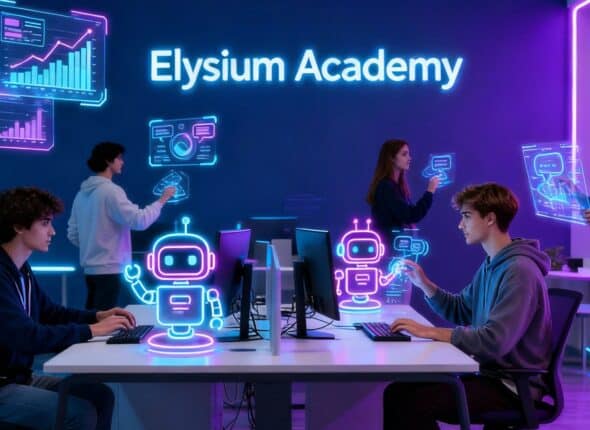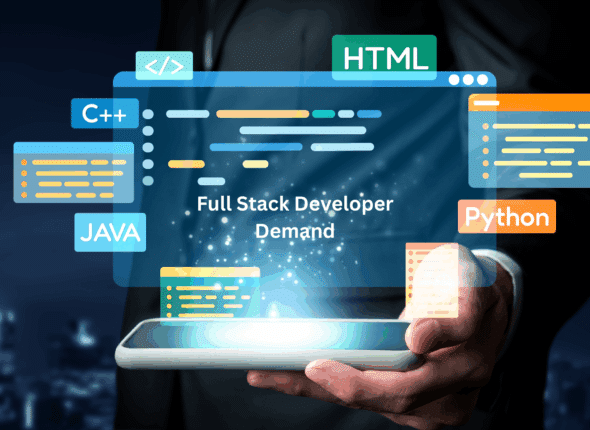World
Class Instructor
1:1 with
Industry Expert
400+
Global Hiring
55%
Avg. Salary Hike
- Overview
- Course Details
- Syllabus
- FAQ
Acquire Key Development Skills: Master Mobile App Development, Earn Certification, Launch Your App Development Career!
Elysium Certified Mobile App Developer Training Course offers comprehensive programs for Android and iOS development, These specialized courses equip you with the skills to build high-quality mobile applications on both major platforms. Upon completion, you receive 100% placement assurance, ensuring you’re well-prepared to secure a role in the competitive tech industry. Gain expertise in cutting-edge technologies and boost your career prospects with Elysium’s trusted training.
2.2
Version
180 Hrs
Duration
45 Hrs
Theory
135 Hrs
Practical
Version
2.2
Duration
65 Hours
Theory
12 Hours
Practical
65 Hours
- Real-world Mobile App Projects
- Personalized coordinator.
- Trainer feedback.
- Trainer availability post sessions.
- Get your staff certified.
- Certificate from governing bodies.
- Recognized worldwide
- Hands on assignment
- Master mobile app development fundamentals, including UI/UX design, and app architecture.
- Dive into advanced concepts such as cross-platform development and performance optimization.
- Learn to implement secure coding practices and integrate third-party services.
- Gain expertise in using development tools and frameworks for both iOS and Android.
- Understand and apply app store submission guidelines and regulations.
- Develop practical skills through hands-on labs and real-world project simulations.
Top companies offer this course to their employees
Course was selected for our collection of top-rated courses trusted by businesses worldwide.


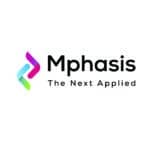

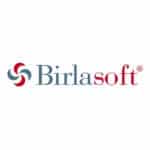
Salary
PER ANNUM
₹ 12 L
Job Growth
Current Month
30%
Offer Jobs
2026
15,500
The Elysium Certified Mobile App Developer program offers learners the opportunity to master the most important skills and tools used by mobile app developers today. Dive into the exciting field of mobile app development and learn to build apps for both iOS and Android platforms with the guidance of experienced instructors. Learners will emerge prepared to tackle real-world app development challenges. Here are some of the skills you will need to learn if you want to become a mobile app developer.
The Mobile App Developer course teaches you to master the concepts of mobile app development. Through this training, you will learn UI/UX Design, App Architecture, Cross-Platform Development, Performance Optimization, Secure Coding Practices, and App Store Submission.
- Mobile App Development is the foundation that drives the creation of innovative applications.
- It involves the comprehensive development of apps used by various organizations and individuals.
- App Testing ensures the apps are free from defects and provide a seamless user experience.
- Mobile App Developers understand user needs and create applications that deliver meaningful functionalities.
- Mobile App Development is the substructure on which modern digital solutions are built.

Our Training Program Benefits
- Live, interactive training by experts.
- Curriculum that focuses on the learner.
- Challenge-based, hands-on project.
- Opportunities for team building.
- Cost- saving training.
- Convenient for your employees.
- Completely tailor-made curriculum.
Chapter-1 Core Java
- Java Introduction
- Features of Java
- Keywords, Literals, Comments
- Data Types
- Operators
- Introduction to Object-Oriented Programming Language
- Creating the object using Constructor
- this Keyword
- Methods
- Scanner class
- Constructor
- Overloading Method
- Method overriding
- Final keyword
- Super keyword
- Runtime Polymorphism
- Abstract classes and methods
- Interface
- Packages
- Access modifications
- Single Dimensional Array
- Multi-dimensional Array
- Immutable String
- Concatenation
- Numbers and String
- Special Characters
- What are Exception?
- Types of Exception
- Try catch-Block
- Multiple catch Block
- Nested try
- Finally Block
- Throw keyword
Chapter-2 Introduction To Android And Recycler View
- What is Android?
- Setting up development environment
- Android Architecture
- Android Component
- Dalvik virtual machine & .apk file extension
- First Android App
- Activities, Services, Broadcast Receivers & content provider
- UI Components – views & notification
- Intent and Bundle passing
- AndroidManifest.xml
- uses-permission & uses -SDK
- Resources & R.java
- Assets
- Layout & Drawable Resources
- Activities and activity lifecycle
Chapter-3 Emulator Android Virtual Device & Basic Ui Design
- Launching Emulator
- Editing Emulator Setting
- Emulator shortcuts
- Adding New Emulator
- Logcat usage
- Introduction to DDMS
- Android Device Monitor
- Form widget
- Text Fields
- UI screen components
- Main Action bar
- View Control
- Content Area
- Split Action Bar
- Linear Layout
- Absolute Layout
- Table Layout
- Frame Layout
- Relative Layout
Chapter-4 Preferences, Menus, Intents And Activity
- Shared Preferences
- Preferences from XML
- APIs - Accessing Preference
- Methods in Shared Preference
- Option Menu and App Bar
- Context Menu and Contextual Action Mode
- Popup Menu
- Sub Menu
- Menu from XML
- Menu via Code
- Types of Intent
- Explicit Intents
- Intent Filter
- Implicit Intents
- Activity Life Cycle
- Configuring the Manifest
- Managing the Activity Life Cycle
- Start Activity for Result
- Share App Data
Chapter-5 Styles & Themes, Content Providers
- Styles.xml
- Structure of a style
- Style hierarchy
- Drawable resources for shapes, gradients (selectors)
- Style attribute in layout file
- Applying themes via code and manifest file
- SQLite Programming
- SQLiteOpenHelper
- SQLite Database
- Working of content provider
- Method of content provider
- Cursor
- Reading and Updating contacts
- Reading bookmarks
Chapter-6 Linkify, Adapter & Widgets
- Web URLs, Email address, text, Map Address
- Phone numbers
- Match filter & Transform filter
- Adapters
- - ArrayAdapter
- - BaseAdapter
- Adapter views
- Types of Adapter
- ListView and ListActivity
- Custom ListView
- Expandable ListView
- GridView using adapter
- Gallery using Adapter
Chapter-7 Notifications, Custom Components & Multithreading
- Creating and sending notification
- Pending intent notification
- Notification with action button
- Broadcast Receiver
- Services and Notification
- Performance and Memory Management
- Android Notification and Alarms
- Custom Tabs
- Custom Animated popup panels
- Thread
- Running on UI thread
- Handler & Runnable
- Multithreading (My splashscreen, stopwatch, ThreadHandler)
- Examples
Chapter-8 Advanced Android Features & Services
- Live Folders
- Using cards
- XML and JSON Parsing
- Enable device networking info reporting
- Manually updating user location
- Accessing Phone services (Call, SMS, MMS)
- Network connectivity services and Set offline
- Referral Tracking
- Android Service Overview
- How to implement a service
- Life Cycle of Services
- Types of Services
- Communication : Inter - Process
Chapter-9 Multimedia, Location- Based Services & Google Map
- Audio File Supported by Multimedia
- Playback Media-Simple
- Video Formats
- Mobile Agent and Peer to Peer Architecture
- Geo Coding and Reverse Geo Coding
- Intent Services
- To Get Location in an Android Apps
- To Track user's Location (Latitude, Longititude and Address)
- Google API Console
- To create Google Map API Key
- Google places API Key
Chapter-10 Sensors, Wifi & Telephonic Service
- How Sensors work
- Using Orientation & Accelerometer sensors 5.5
- Motion Sensor
- Environmental Sensor
- Position Sensor
- Monitoring and managing Internet Connectivity
- Managing active connection
- Managing WiFi networks
- Making calls
- Monitoring data connectivity and activity
- Accessing phone properties and status
- Controlling the phone
- Sending messages
- Wireless Connectivity and Mobile Apps
Chapter-11 Graphics, Camera & Bluetooth
- 2D graphics
- 3D graphics
- Performance and Multithreading
- Graphics and UI Performance
- Taking Pictures
- Media Recorder
- Using Existing Android Camera Application
- Directly using Camera Application
- Controlling local Bluetooth device
- Discovering and bonding with Bluetooth device
- Scan for Other Bluetooth Device
- Connect to other devices through service discovery
Chapter-12 Testing & Debugging Android Application
- Fundamental of Testing
- Testing Tools in Android
- Types of test in Android
- Security with HTTPS and SSL
- Dependency Injection
- Set up project for AndroidX Test
- Unit4 rules with AndroidX Test
- Android JUnit Runner
- Dalvik Debug Monitor server - It's Role and use(DDMs)
- Android Application and Debugging
- The use of Filters, Breakpoints, Suspend and Resume
- To Setup Espresso for functional Testing
- Espresso cheat seat
- To Create custom matcher in Espresso
- Testing Recycler view with Espresso
- Espresso Resource Idling
- Multiprocess Espresso
- Espresso Web
Chapter-13 Basics Of Android Secure Coding
- Securing tips
- Storing data
- Security with Network Protocols
- Types of Connectivity
- Network security configuration
- Networking Libraries (volley, OKHttp, etc.)
- Update your security provider to protect against SSL exploits
- SafetyNet safe browsing API
- Media Loaders (Picasso, Glide, etc.)
- Workflow for using permission
- Types of permission
- Broadcast receiver
- Work with data more securely
- Cryptography
- Android keystore system
- APK Attack Surface
- Application Obfuscation
- Mobile Application Security Scanner
Chapter-14 Getting Started
- XCode
- iOS
- Swift
- Installation setup
- Comments
- The println() function
- Variables
- Constants
- Data types
- Optional
- Type inference
- Hands on
- For
- lf else if
- Do While
- While
- Switch
- Break and continue statement
- Hands on control flow
- Comparison operators
- Arithmetic operators
- Logical operators
- Hands on operators
- Literals
- Mutable strings
- Comparing strings
- Concatenating strings
- Hands on strings
Chapter-15 Functions, Oops
- What is Swift Functions?
- Swift Nested Function
- Parameter & Return Value
- Swift Recursion
- Function Overloading
- Hands on functions
- Swift Arrays
- Swift Dictionary
- Swift Sets
- Swift Closures
- Swift Typealias
- Hands on collections
- For loops
- While loops
- For in loops
- Iterating over arrays
- Hands on loops
- Swift Enum
- Structures
- Classes and objects
- Inheritance
- Methods
- Class Methods
- Type check
- Any object
- Protocols
- Hands on Swift OOPS
- Defining a closure
- Closures with parameters
- Closures with returned values
- Closures as callbacks
- Defining & implementing protocol
- Delegate design pattern
- Implementing & using delegates
- Hands on closures, protocol, delegates
Chapter-16 Advanced Oops
- Creating & using enumerations
- Type checking
- Type casting
- Down casting
- Hands on enum and type casting
- Creating & using tuples
- Creating & using type aliases
- Strong & weak references
- Avoiding strong reference cycles
- Reference Counting Basics
- Automatic Reference Count
- Retain Cycles
- Create enum of Errors
- Create a Throwing Function
- Function Call Using try Keyword
- Handling Errors Using do-catch Statement
- Hands on
Chapter-17 Extension, Access Control
- Swift Generic Function
- Swift Generic Class
- Type Constraints in Swift Generics
- Hands on
- What is extension in Swift?
- Computed Property In Extension
- Protocol Extension
- Hands on
- What is Swift Access Control?
- Types of Swift Access Controls
- Public Access Control
- Private Access Control
- File Private Access Control
- Internal Access Control
- What is Swift Typealias?
- How to create a typealias?
- Typealias for built-in types
- Typealias for user defined types
- Typealias for complex types
- Swift hashable
- Hands on
- What is equatable?
- Strong Reference in Swift
- Swift Weak Reference
- Hands on
Chapter-18 Xcode
- Purpose of XCode
- iOS Simulator
- Interface Builder
- iOS application architecture
- Installation setup
- What is MVC?
- Model, View and Controller Classes
- Delegate and Data source
- Singleton Pattern
- Observer pattern
- Target-Action
- Cocoa coding standards
- What are controls?
- Views
- Views Hierarchy
- Button, Label, Text fields
- Switch, Slider, Progress bar
- Alerts, Action sheet
- Table views
- Scroll view, Web view, Maps
- Search Bar, Popovers
- Picker, Date picker, Image view, Image picker controller
- Gestures, Mouse events
- Mail, Message, Phone call
- Creating outlets and actions
- Hands on Basic UI Interactions
- Stacks
- Nested Stacks
- Down casting
- Constraints
- Content Hugging Priority
- Compression Resistance Priority
- Hands on Auto layout
Chapter-19 Views, Animations
- UITableViewController
- Working with multiple TableViews
- UITableViewCell
- Table View practices
- Custom Cell creation
- Multi-View Applications
- view to view (Present model view controller)
- Navigation controller
- Tab bar controller
- Page view controller
- Split view controller
- Hands on Table View
- Design UI
- Item Class
- Adding Items Statically
- Table Header View
- Text Field Delegate Method
- Select an Item
- Deleting an Item
- No Duplicates
- Refactoring the Code
- Sections in Table View
- Animating the Transfer
- Touches Began and Ended
- Touches Moved
- Gestures
- Hands on Gestures
- Transformations
- Gestures and Transform
- Hands on touches
- Animation Blocks
- View Effects
- Hands on View Effects
- View Transitions
- Hands on animations
- Maps
- Annotations
- Custom Annotations
- Location
- Location on the map
- Hands on Maps and location
Chapter-20 Storyboards, Consurrency
- Storyboard File
- View Controller and Scene
- Segue
- Invoking a Segue
- XIB and Storyboards
- Table View Cell Prototype
- Debugging with Print
- Breakpoints
- Exception Breakpoints
- Advanced Breakpoints
- Debug Navigator
- Unit Testing
- UI Testing
- Performance Testing
- Hands on testing and debugging
- Camera
- Play an Audio
- Audio Recorder
- Play a Video
- AV Player Stand Alone
- Orientation
- Motion
- XCode Assets
- Hands on
- What is GCD?
- What is KVO?
- GCD Singleton
- Operation Queue
- Simple Operation
- Queued Operations - State and Value
- Queued Operations - Table View
- Queued Operations - Pending Operations
- Queued Operations - Table View Interactions
- Hands on
Chapter-21 Web Services
- What are web services?
- Why do we use web-services
- How apps function with the help of web-services
- Introduction to different web services
- JSON parsing, XML parsing
- Get and POST methods
- Notification
- NSNotification
- NSNotificationCenter
- UILocalNotifications
- Push Notification services
Chapter-22 Firebase
- What is Firebase?
- Purpose of Firebase
- Features of Firebase
- Adding Firebase to App
- Installation Setup
- Setup Firebase
- Setup Authentication View Model
- Register Test User With Firebase
- Authentication View Model Bug Fix
- Keeping User Logged In
- Logging In / Signing Out
- Setup Firebase Firestore
- Setup Firebase Storage
- Upload User Data To Cloud Firestore
- Upload Profile Photo UI
- Upload Profile Photo Presentation Logic
- Upload Profile Photo To Firebase Storage
- Fetch User Data From Firestore
- User Data Model
- Populating Settings View With User
- Load Profile Image & Authentication Bug Fix
- Fetch & Display Users In New Message View
What is the duration of the Elysium Certified Mobile App Developer course?
The course duration is typically 12 weeks, with flexible learning options to fit different schedules.
Do I need any prior experience in mobile app development to enroll in this course?
No prior experience is required. This course is designed for both beginners and professionals looking to enhance their skills.
What certification will I receive upon completing the course?
Upon successful completion, you will receive the Elysium Certified Mobile App Developer certification, which is recognized globally.
Are there any prerequisites for enrolling in this course?
Basic knowledge of programming and software development is beneficial but not mandatory.
How is the course delivered?
The course is delivered through a combination of online lectures, hands-on labs, real-world projects, and interactive sessions with instructors.
Will I have access to course materials after the course is completed?
Yes, you will have lifetime access to all course materials, including video lectures, assignments, and additional resources.
What kind of support is available during the course?
You will have access to a dedicated coordinator, regular feedback from trainers, and post-session support to address any questions or challenges.
Are there any real-world projects included in the course?
Yes, the course includes several real-world projects to provide practical experience and help you apply the concepts learned.
Can I get my team certified through this course?
Yes, we offer customized training programs for teams. Please contact our support team for more details on group certifications.
How can I enroll in the Elysium Certified Mobile App Developer course?
You can enroll through our website by completing the registration form and selecting your preferred course schedule. For assistance, our support team is always availa
Course Audio Explanation (தமிழ்)

- Elysium Certified Mobile App developer - Training Course TESBO
- Duration: 180 Hours
- Level: Beginner
- Days: 180 Days
- Chapters: 22
- Language: English
- Certifications: Yes
- Code: EAPL/TESBO/TSTC06
- Course Code: EATMA
- Sub Category: Mobile App Development Training Course
Thank you!
We will contact you soon.
Elysium Certified Mobile App Developer Features

Comprehensive Curriculum
Learn the full spectrum of mobile app development, from basic principles to advanced techniques covers both iOS and Android platforms.

Hands-On App Developer Experience
Engage in practical exercises and real-world projects. Build and deploy your own mobile applications throughout the course.

Certification Exam Preparation
Get fully prepared for the Elysium Certified Mobile App Developer exam by practice tests, study materials, and expert tips for success.

Expert Instructors
Gain insights from industry leaders and experienced mobile app developers. Our instructors provide personalized guidance and support.

Flexible Learning Options
Choose between online and in-person classes to fit your schedule. Learn at your own pace with our flexible approach.

Career Advancement
Boost your resume and professional profile with our certification. Receive job placement assistance and career counseling services.
What Will You Learn?

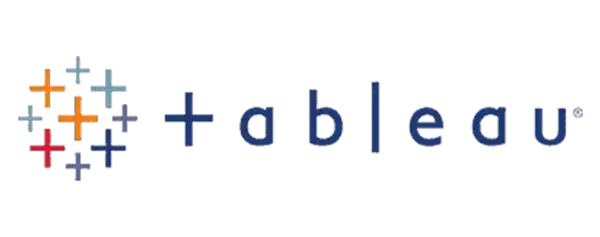
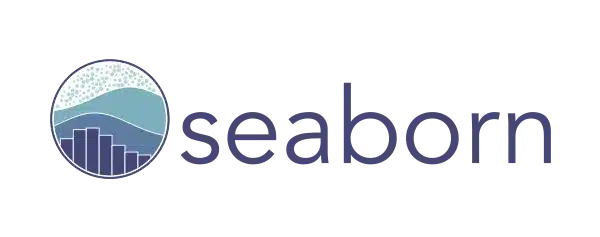



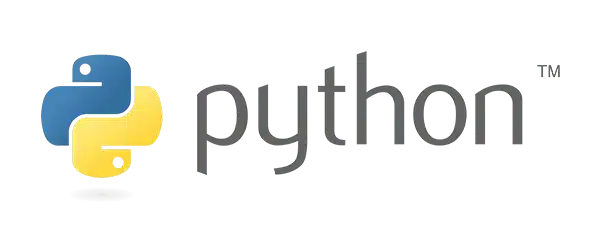

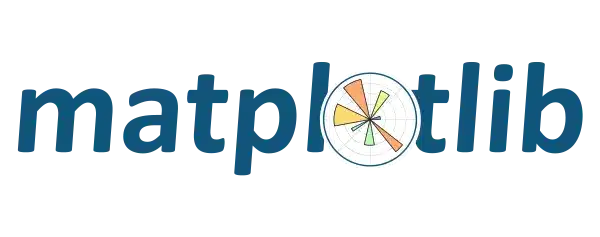

Our Latest Blogs
Which Digital Marketing Skills Are Highest-Paying | Top Digital Marketing Course Institute Guide
In today’s fast-evolving digital economy, businesses of all sizes are relying heavily on online marketing strategies to grow their brand,…
AI Powered Digital Marketing Course – 12 Must-Know AI Trends in Digital Marketing
In an increasingly digital world, the demand for smart, data-driven, and automated marketing solutions is rising at a breakneck pace.…
Full Stack Developer Demand, Skills, and Compensation
Full Stack Developer Demand , Skills, and Compensation Introduction : The Strategic Importance of the Full-Stack Developer The full-stack developer—a…
Related Courses
AI Mastery For Entrepreneurs Programme
Master the essentials and advanced techniques of Python programming with our comprehensive Core & Advanced Python Training Course.
AI Engineering For Developers
Master the essentials and advanced techniques of Python programming with our comprehensive Core & Advanced Python Training Course.
AI Power Digital Marketing
Unlock the power of online marketing with our Digital Marketing Fundamentals Training Course. Master SEO, SEM, content marketing.

Recommend your friends/colleagues and earn gift vouchers worth up to INR 1000/-!
Invite friends to join our community, and receive valuable gift vouchers as a token of appreciation for each successful referral. Spread the word about our referral program today and start earning rewards!






















